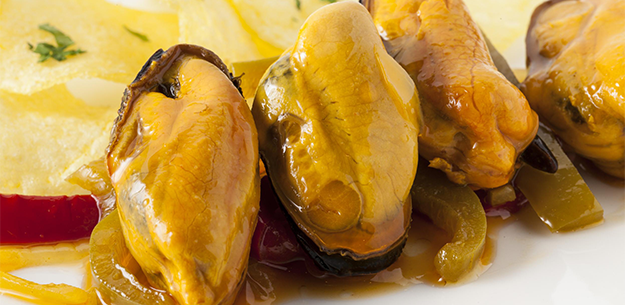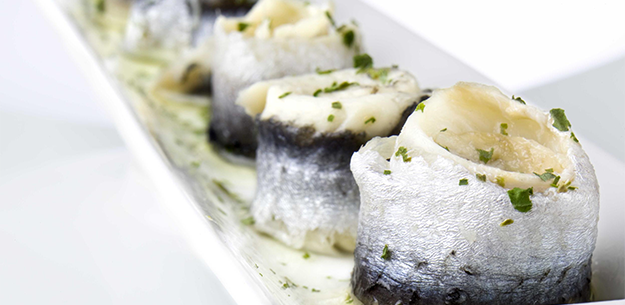.png.transform/rendition-xs/image_image%20(1).png)
Marinades
Escabeche, adobo and salmuera are types of marinades used in traditional cookery for conserving foods. They are still appreciated for the flavor they add to foods and are very common in Spanish cooking.
Escabeche is an ancient way of preserving foods in a spiced vinegar marinade. Hunting once was much a part of rural life in every region of Spain, where small game- rabbit, hare, partridge and quail- was free for the taking. When hunters returned with an abundance, the game would be dressed-out and cooked in a marinade, then packed into clay pots.
Olive oil in the marinade would rise to the top and create a protective seal, allowing the escabeche foods to be kept for several months during the cold season. Chunks of marinated meat could be reheated, stewed with beans or added, cold, to salads.
Typically, escabeche was made with white wine, vinegar, olive oil, onion, garlic, salt, peppercorns, pimentón (a type of Spanish paprika), cloves and bay leaf. In order to conserve the game, the marinade needed to be very strong in vinegar. Nowdays, with modern canning methods and refrigeration, the escabeche is not so sharp. Canned partridge in escabeche, based on the traditional recipe, is a gourmet food product from Spain.
Escabeche marinade is also used with fish, both fresh water trout, pike and tench, and seafood such as mackerel, bonito, albacore tuna and oysters. Fish is gutted, floured and fried until thoroughly cooked. Then hot escabeche marinade is poured over the pieces of fish. Left to marinate for a day or two, the fish acquires a delicious tang. Escabeche fish is usually served as a cold dish.
While escabeche is used with cooked foods, adobo marinade traditionally was used for preserving uncooked meat or fish. It almost always contains vinegar, oregano, garlic, salt and pimentón.
Marinating pork
One of the best-known version is lomo en adobo or lomo de orza, whole, marinated pork loin. In bygone times, following the matanza, pig slaughtering, choice cuts of fresh meat such as the loin were marinated for several days (during which time the rest of the meat could be processed for sausages and hams), then sliced, fried, and packed in an orza, an earthenware jug, and covered completely with melted pork fat or olive oil. After cooking, the pork became a confit, which would keep for several months. A few slices of the pork, fried with potatoes in some of the fat from the pot, made very tasty "fast food" in the traditional kitchen.
Fish in adobo is a specialty of port towns, where, before refrigeration, the day's catch could be preserved for a few days. It is especially favored for strongly-flavored fish such as cazón, dogfish, a kind of shark, but can be used for any solid-fleshed fish. The fish is cut into chunks and marinated with vinegar, olive oil, garlic, pimentón and oregano. The fish is drained, floured and fried until crisp and golden.
One of the most emblematic of Spanish tapas is boquerones en vinagre, fresh anchovies that are filleted, and then left in a vinegar marinade, no heat required. The vinegar turns the fillets white and firms the flesh. The marinade is drained and the little fish are dressed with olive oil, chopped garlic and parsley.
Janet Mendel is a food writer based in southern Spain. She is the author of several books about Spanish food, including Cooking in Spain and Tapas: a bite of Spain (Santana Books, Spain); My Kitchen in Spain and Cooking from the Heart of Spain-Food of La Mancha (Harper Collins), and Traditional Spanish Cooking (Frances Lincoln, UK).


- Marinades 1
- Marinades 2

